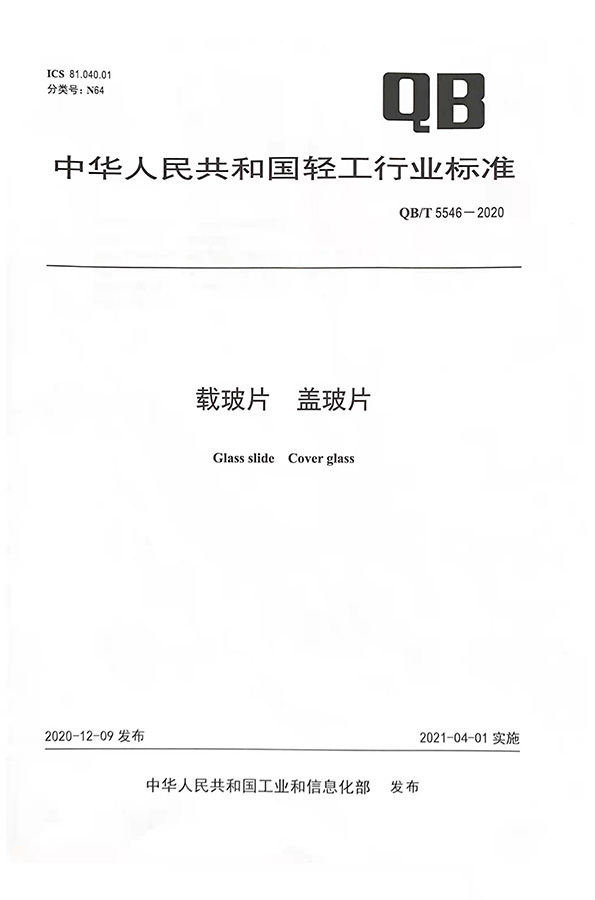The national industry standard for Glass Slides and cover glass drafted by our company and the National Light Industry Glass Product Quality Supervision and Testing Center was released on December 9, 2020 and implemented on April 1, 2021.

Glass slide
Glass slides are glass or quartz slides used to put things when observing things with a microscope. When making samples, cells or tissue sections are placed on the glass slides, and the cover slides are placed on them for observation. Optically, a sheet of glass like material used to produce phase differences.
Material: glass slide is used to place experimental materials during the experiment. It is rectangular, 76*26 mm in size, thicker and has good light transmittance; The cover glass is covered on the material to avoid the contact between the liquid and the objective lens, so as not to pollute the objective lens. It is square, with a size of 10*10 mm or 20*20mm. It is thin and has good light transmittance.
Cover glass
Cover glass is a thin and flat glass sheet of transparent material, usually square or rectangular, about 20 mm (4/5 inch) wide and a fraction of a millimeter thick, which is placed on the object observed with a microscope. Objects are usually placed between the cover glass and slightly thicker microscope slides, which are placed on the platform or sliding block of the microscope and provide physical support for objects and sliding.
The main function of the cover glass is to keep the solid sample flat, and the liquid sample is formed into a flat layer with uniform thickness. This is necessary because the focus of the high-resolution microscope is very narrow.
The cover glass usually has several other functions. It keeps the sample in place (by the weight of the cover glass, or in the case of wet installation, by surface tension) and protects the sample from dust and accidental contact. It protects the microscope objective from contacting the sample and vice versa; In an oil immersion microscope or a water immersion microscope, the cover slides to prevent contact between the immersion solution and the sample. The cover glass can be pasted on the slider to seal the sample and delay the dehydration and oxidation of the sample. Microbial and cell cultures can grow directly on the cover glass before being placed on the glass slide, and the sample can be permanently installed on the slide instead of the slide.
Post time: Jul-26-2022
